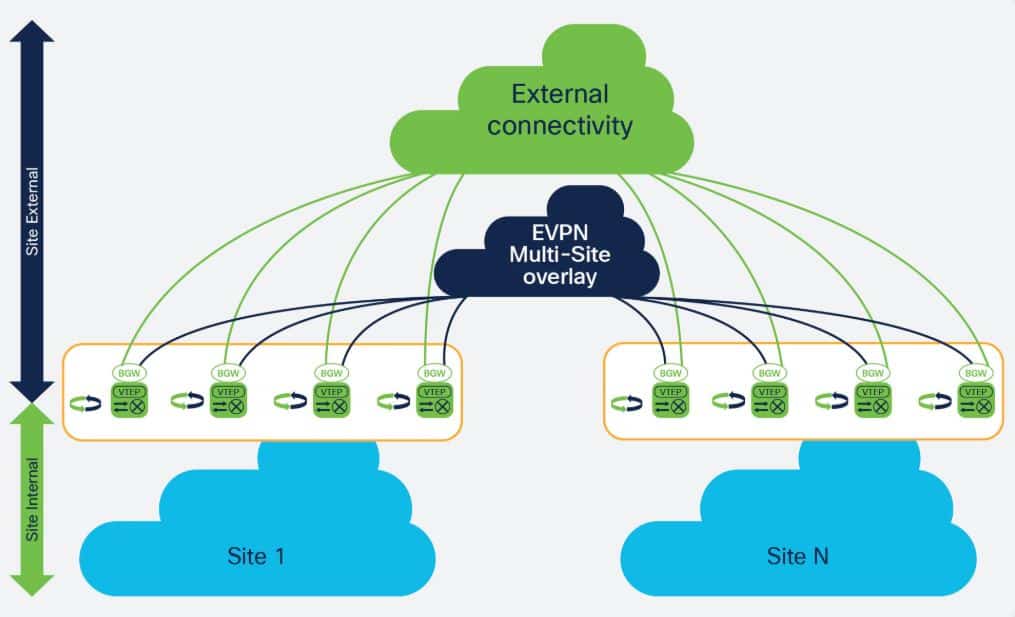Multi-Site Connectivity: What Large Businesses Get Wrong
Companies with multiple locations face a connectivity challenge that doesn’t exist for single-site operations. It’s not just about getting internet to each office—it’s about creating a network that lets all those locations work together as one cohesive business. But the approach most companies take creates more problems than it solves.
The typical pattern goes something like this: a business opens a second location and treats it as a separate entity from a connectivity standpoint. They sign up for whatever internet service is available at that address, set up some basic networking equipment, and call it done. Maybe they add a VPN so the two offices can communicate. This works initially, when there are only two sites and limited inter-office traffic. Then the company grows to three locations, then five, then ten. The patchwork approach that seemed fine early on becomes a management nightmare.
The Provider Fragmentation Problem
One of the biggest mistakes large businesses make is ending up with different internet providers across different sites. It happens naturally—each location gets set up independently, someone picks whatever provider seems best at that particular address, and nobody thinks about the long-term implications.
This fragmentation creates serious management headaches. Each provider has different support processes, different service level agreements, different billing systems, different technical specifications. When problems arise, IT teams spend time figuring out which provider to call for which site, navigating different support structures, and trying to coordinate responses across providers who don’t communicate with each other.
The performance inconsistency matters too. One office might have fiber with symmetric gigabit speeds and guaranteed uptime. Another might be stuck with whatever cable internet was available in that area, with lower speeds and consumer-grade reliability. Employees working in different locations have dramatically different experiences, and applications that depend on inter-office communication perform unpredictably.
Businesses operating across multiple locations benefit from working with providers who specialize in internet for large businesses and can deliver consistent service standards regardless of where offices are located. This consistency matters more as companies scale—what works for two offices becomes unmanageable at ten.
Bandwidth Planning That Ignores Reality
Companies often approach bandwidth allocation for multi-site setups by asking “what does each office need?” and then provisioning connections based on those individual assessments. This seems logical but misses how modern businesses actually work.
Inter-office traffic patterns get overlooked. When offices need to communicate constantly—sharing files, accessing centralized systems, participating in company-wide video calls—the bandwidth between sites matters as much as internet speeds at each location. A setup that provides great external internet but terrible inter-office connectivity leaves employees frustrated and productivity suffering.
The calculation changes when you factor in cloud services, backup systems, and centralized applications. That branch office might only have 15 employees, but if they’re all accessing applications hosted in the main office’s data center, or backing up to centralized storage, or participating in daily video meetings with other locations, their bandwidth needs are higher than the employee count suggests.
Peak usage patterns compound across multiple sites. When every office hits its busiest period during the same hours—which usually happens since they’re all working the same business hours—the network needs to handle everyone’s peak demands simultaneously. Planning bandwidth based on average usage rather than peak concurrent usage leads to slowdowns right when people need performance most.
The VPN Approach That Doesn’t Scale
The standard solution for connecting multiple offices is setting up VPNs between locations. This works as a starting point, but VPN-based architectures create problems as networks grow.
Performance degrades with VPN overhead. Every packet gets encrypted, sent through the internet, and decrypted at the destination. This adds latency and reduces effective bandwidth. For two offices, the performance hit might be acceptable. For ten offices all trying to communicate with each other, the overhead becomes significant.
Management complexity explodes with scale. Connecting three offices requires three VPN tunnels. Five offices need ten tunnels. Ten offices require 45 separate VPN connections. Each tunnel needs configuration, monitoring, and troubleshooting when problems arise. IT teams spend increasing amounts of time just maintaining the VPN infrastructure rather than focusing on actual business needs.
Security becomes harder to manage, not easier. Multiple VPN tunnels mean multiple potential entry points, multiple configurations that need to stay secure, and multiple opportunities for misconfigurations that create vulnerabilities. The more complex the setup, the more likely something gets overlooked.
Inconsistent Service Levels Across Locations
Large businesses often end up with wildly different service level agreements at different sites. The headquarters might have enterprise-grade connectivity with 99.9% uptime guarantees and four-hour response times. Regional offices might have business-class service with weaker guarantees. Smaller locations might be stuck with whatever consumer-grade service was available with no real SLA at all.
This inconsistency creates unpredictable problems. When the main office’s internet goes down, everyone knows it’s a priority and expects rapid response. When a smaller office loses connectivity, they might be waiting days for resolution because their provider treats it as a routine residential service call.
The business impact varies by location in ways that don’t align with business priorities. A small office that handles critical customer service functions needs reliability just as much as headquarters, but might have inferior connectivity simply because someone made decisions based on office size rather than business function.
Budgeting becomes complicated when different locations have different cost structures, different contract terms, and different upgrade paths. Planning network improvements across the company requires coordinating with multiple providers, each with their own pricing and timelines.
Poor Network Architecture Decisions
Many businesses treat multi-site connectivity as a collection of independent offices that occasionally need to talk to each other, rather than designing an actual network architecture. This lack of planning creates bottlenecks and inefficiencies.
Hub-and-spoke designs make sense for some businesses but get implemented poorly. All branch offices route through headquarters, which becomes a chokepoint. If the main office’s internet goes down, branches can’t communicate with each other or access central resources—even though they all have working internet connections locally.
Mesh networks where every office connects directly to every other office sound good in theory but create management nightmares in practice. The complexity grows exponentially with each new location, and troubleshooting problems becomes nearly impossible when any given connection could be taking multiple different paths through the network.
Centralized vs. distributed resources decisions don’t get enough thought. Should each office have local servers and storage, or should everything centralize? The answer affects bandwidth requirements dramatically, but companies often make these decisions without considering connectivity implications.
Ignoring Redundancy Until It’s Too Late
Single points of failure plague multi-site networks. One internet connection per site seems sufficient until that connection goes down and the entire location goes offline. For businesses where every location needs to stay operational, single connections create unacceptable risk.
The problem is redundancy costs money, and it’s hard to justify the expense until you’ve experienced costly downtime. Then it’s obvious that paying for backup connections would have been cheaper than the lost productivity and revenue from outages.
But redundancy isn’t just about having two internet connections at each site. It’s about ensuring those connections don’t share common failure points—different providers, different physical infrastructure, different entry points into the building. Otherwise, the redundancy provides false confidence when the underlying cause of failure affects both connections simultaneously.
The Migration Problem
Companies that realize their multi-site connectivity is a mess face a difficult challenge: fixing it usually requires major changes while business continues operating. You can’t just shut down the network and rebuild it properly.
Migration planning needs to account for maintaining operations during the transition. Each site potentially needs to run old and new connectivity in parallel while cutover happens. This gets expensive and complicated, especially when dealing with multiple providers and locations spread across different time zones.
Testing becomes critical. Changes that work fine in a lab environment can break in production when they interact with the quirks of existing systems. But testing multi-site network changes without affecting operations is nearly impossible, so businesses end up making changes during off-hours and hoping everything works.
Getting It Right From the Start
The companies that handle multi-site connectivity well think about it as a unified network from the beginning, not a collection of independent offices. They establish standards for what connectivity looks like—same provider where possible, consistent service levels, compatible equipment, centralized management.
They plan for growth rather than just meeting current needs. Adding new locations should be straightforward, not require rethinking the entire network architecture. The infrastructure should scale naturally as the business expands.
They invest in proper network design upfront rather than patching problems later. Professional network architecture for multi-site businesses costs money but prevents the expensive mess of trying to fix a patchwork system that grew organically without planning.
Most important, they recognize that connectivity between sites matters as much as connectivity to the internet. Modern businesses don’t operate as isolated locations that happen to share a company name—they function as integrated organizations where information flows constantly between locations. The network infrastructure needs to support that reality, not fight against it.
























